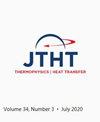叶片多腔挤压器叶尖气热性能鲁棒性分析的创新框架
IF 1.7
4区 工程技术
Q4 ENGINEERING, MECHANICAL
引用次数: 1
摘要
燃气轮机受到各种几何和操作不确定性的影响,而这些不确定性在传统研究中经常被忽视。因此,从确定性方法得出的结论可能无法准确反映燃气轮机的实际运行情况。为了解决这个问题,本文提出了一个有效的不确定性量化框架,用于评估多腔尖部的气热性能鲁棒性。此外,还开发了一种新的可视化方法来分析不确定性流场和热场。研究结果表明,传统的研究往往高估了多腔尖声器的气动性能。肋的安装会加剧流场的混乱趋势,导致实际操作过程中尖叫器尖端的空气动力学性能鲁棒性显著降低。然而,由于流场不确定性无法通过肋传递到热场,多腔尖叫器尖端的传热性能鲁棒性显著增强。此外,该研究揭示了肋根附近区域的高热通量波动,这突出了在设计多腔尖部时考虑热疲劳风险的重要性。本文章由计算机程序翻译,如有差异,请以英文原文为准。
Innovative Framework for Robustness Analysis of Blade Multicavity Squealer Tip Aerothermal Performance
Gas turbines are subject to various geometric and operational uncertainties, which are often overlooked in conventional research. Therefore, conclusions derived from a deterministic approach may not accurately reflect the actual gas turbine operation. To address this issue, this paper presents an effective uncertainty quantification framework for evaluating the aerothermal performance robustness of the multicavity squealer tip. Moreover, a novel visualization method is developed to analyze the uncertainty flow and thermal fields. The findings suggest that conventional research tends to overestimate the aerodynamic performance of the multicavity squealer tip. The installation of ribs can exacerbate the chaotic tendency of the flowfield, leading to a significant reduction in the aerodynamic performance robustness of the squealer tip during actual operation. However, the heat transfer performance robustness of the multicavity squealer tip is substantially enhanced due to the inability of the flowfield uncertainty to transfer to the thermal field through the ribs. Furthermore, the study reveals high heat flux fluctuations in the region near the ribs root, which highlights the importance of considering thermal fatigue risks in the design of multicavity squealer tips.
求助全文
通过发布文献求助,成功后即可免费获取论文全文。
去求助
来源期刊

Journal of Thermophysics and Heat Transfer
工程技术-工程:机械
CiteScore
3.50
自引率
19.00%
发文量
95
审稿时长
3 months
期刊介绍:
This Journal is devoted to the advancement of the science and technology of thermophysics and heat transfer through the dissemination of original research papers disclosing new technical knowledge and exploratory developments and applications based on new knowledge. The Journal publishes qualified papers that deal with the properties and mechanisms involved in thermal energy transfer and storage in gases, liquids, and solids or combinations thereof. These studies include aerothermodynamics; conductive, convective, radiative, and multiphase modes of heat transfer; micro- and nano-scale heat transfer; nonintrusive diagnostics; numerical and experimental techniques; plasma excitation and flow interactions; thermal systems; and thermophysical properties. Papers that review recent research developments in any of the prior topics are also solicited.
 求助内容:
求助内容: 应助结果提醒方式:
应助结果提醒方式:


